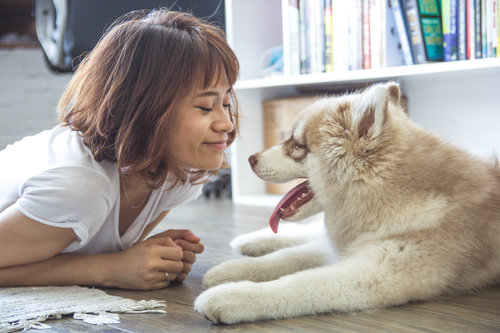Animal Assisted Therapy
IS ANIMAL ASSISTED THERAPY (AAT) REALLY A THING?
 Yes! Animal Assisted Therapy is simply the incorporation of Animals into therapeutic interventions. It is not a stand-alone therapeutic approach, but rather a therapeutic tool that can be used in any type of therapy. Animals can be useful for increasing motivation, client comfort levels, mindfulness (awareness of the present), and enjoyment of the therapy process.
Yes! Animal Assisted Therapy is simply the incorporation of Animals into therapeutic interventions. It is not a stand-alone therapeutic approach, but rather a therapeutic tool that can be used in any type of therapy. Animals can be useful for increasing motivation, client comfort levels, mindfulness (awareness of the present), and enjoyment of the therapy process.
Lets face it, many of us just love dogs and having an appointment in which a dog sits on your lap can be naturally therapeutic. Simply petting animals has been correlated with an increased release of serotonin and oxytocin- neurotransmitters involved in a sense of well-being and connectedness.
Work with animals can lower anxiety and help people better regulate their emotions. For dog lovers, just being in a room with a dog present has been found to lower blood pressure and relax breathing rates. Dogs can help on a basic level as an ice breaker and occasional distraction to reduce the anxiety sometimes present when discussing difficult topics.
Burgeoning research also suggests that animal assisted therapy may increase mental stimulation and aid in memory. Other studies have found AAT can reduce client’s experiences of physical pain. While much of the research in specific AAT techniques has been too small scale to be widely recognized; the evidence of the effects of interaction with pets and animals in general has been well documented.
WHAT DOES AAT LOOK LIKE?
 Our therapy dogs may be incorporated in specific ways or may just be present to help you process. There are several ways we might incorporate our therapy animals if you desire; following are some examples:
Our therapy dogs may be incorporated in specific ways or may just be present to help you process. There are several ways we might incorporate our therapy animals if you desire; following are some examples:
Dogs are very intuitive and tend to respond to your mood: We may notice the dog’s behavior or responses to you and identify patterns or draw parallels with what’s going on for you.
We can use animals to increase your own mindfulness of what you are experiencing and working through. For example, while discussing severe trauma it is common to dissociate or have trouble staying connected to the present moment; dogs can have a grounding effect to help you share your story.
Dogs can be particularly useful in more goal directed ways with children and adolescents. For example, we might help children process the experience of adoption or life transitions by discussing their experience metaphorically by talking about our rescue animals’ experience.
For children with impulse control challenges, we can assist the child in “training” the dog to build their skills, self-esteem, confidence, and patience.
The way a therapy animal may be incorporated into session can be specific to each person’s unique situation and goals.
ARE THERAPY ANIMALS SAFE?
 Generally speaking, yes; however, animals do not always behave in completely predictable ways, so there is always a risk. Therapy animals are screened for their personalities and behavior to ensure that they are friendly and non-aggressive to people. Therapy animals are certified as a team with their specific handlers because their handlers are intimately familiar with the animal’s personality and behavior and can spot changes in the animal’s mood that could warrant caution. Even very friendly animals can get tired of being touched all day and may need some time to themselves; and their handler watches for this shift in mood in the animal.
Generally speaking, yes; however, animals do not always behave in completely predictable ways, so there is always a risk. Therapy animals are screened for their personalities and behavior to ensure that they are friendly and non-aggressive to people. Therapy animals are certified as a team with their specific handlers because their handlers are intimately familiar with the animal’s personality and behavior and can spot changes in the animal’s mood that could warrant caution. Even very friendly animals can get tired of being touched all day and may need some time to themselves; and their handler watches for this shift in mood in the animal.
Animals may accidentally cause injury. Animals often use their mouths in play; therefore, even when playing it is possible for you to feel teeth or get scratched. We ask all clients to sign a waiver in order to engage with our therapy animals, but as you will see when you meet them—they are not intimidating at all.
Our animals are always in good health and groomed when in session, they are spayed or neutered, and up to date on all vaccinations.
WHAT ABOUT AT THREADS OF HOPE?
Currently, we only have Pip, our therapy puppy who attends some sessions with Jenny, for more information on him check out our Meet Our Team page.
